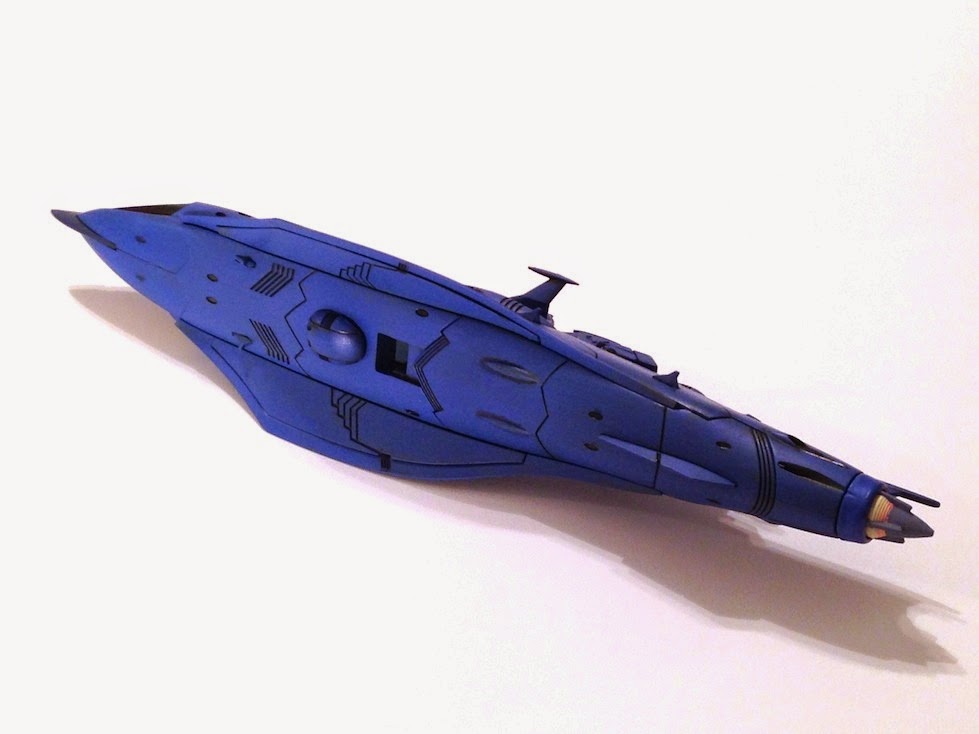I would like to share a model I made back in the winter of 2010. The Space Battleship Yamato, called Argo and Intrepido in some countries, is one of my favorite spaceships ever. It is the main vehicle seen in 1974's 宇宙戦艦ヤマト (Space Battleship Yamato), called "Star Blazers" when it was released in English, later in 1979. Other language versions were "Astronave Intrepido" in Spanish-speaking countries, and "Patrulha Estelar" in Brazil and Portugal.
The news of the live-action film with Takuya Kimura and Meisa Kuroki, along with the trailers for the film, sparked some nostalgic force in me. So in 2010, I purchased the model and a few "mini-kits" (called Mecha Colle in Japan) from the original anime series. This model is in 1/700 scale. The miniature Mecha Colle kits are non-scale. I'll post some of those later.
This particular casting was re-released in 2009. But the original molding was done as a "Mechanical Model" version back in 1978! It's basically the same model without the interior parts like the engine and the Wave-Motion gun.
When I made the kit in 2010, it was my first model in nearly 7 years. So I was extremely excited to get my hands on this project.
I want to mention again that I'm not a professional model-builder so many of my remedies to details and such are experimental.
My first concern was the color. I blended a medium-to-light gray with a touch of blue and a few drops of purple. In some episodes it has this color. At other times, the color is more blue-green-gray. As the series progressed through the 1980's with sequels and seasons two and three, the ship's gray livery gets darker and darker.
Windows, portholes, and other lights change from greens to yellows, even soft blues, throughout the many incarnations of Yamato. I chose the green lights. I wanted my Yamato a lighter color because this is the way it appears in the very beginning of the show as it rips out of the ground. My pictures make it look darker than the actual thing.
When I got the model, I was slightly disappointed by the lack of detail in some areas. Because Yamato is such a classic, there are many model kit releases available. The newer ones kept improving on the surface detailing, so I had to add some of my own. These subtle additions were mostly panels and hatches that I painted on the surface to bring my model up-to-date.
I experimented with brushes and tried making some weathering on the hull. But I didn't want it to look too battle damaged.
I did some old fashioned "lighting" tricks, like using very light colors for glowing areas.
For a model from 1978, the halves of the fuselage fit together very nicely. I did have to do quite a bit of sanding but very little puttying was needed.
I definitely want to get the 2199 version. Bandai makes it in 1/1000 and 1/500. But for right now, I really like my simple old-fashioned model kit.
There's something very expressive and very alive about these older kits. They really do capture the spirit of these classic animes from the 70's and 80's. And along with Kodai, Mori, Sanada and all the rest, the Yamato itself feels like one of the main characters as well.










































